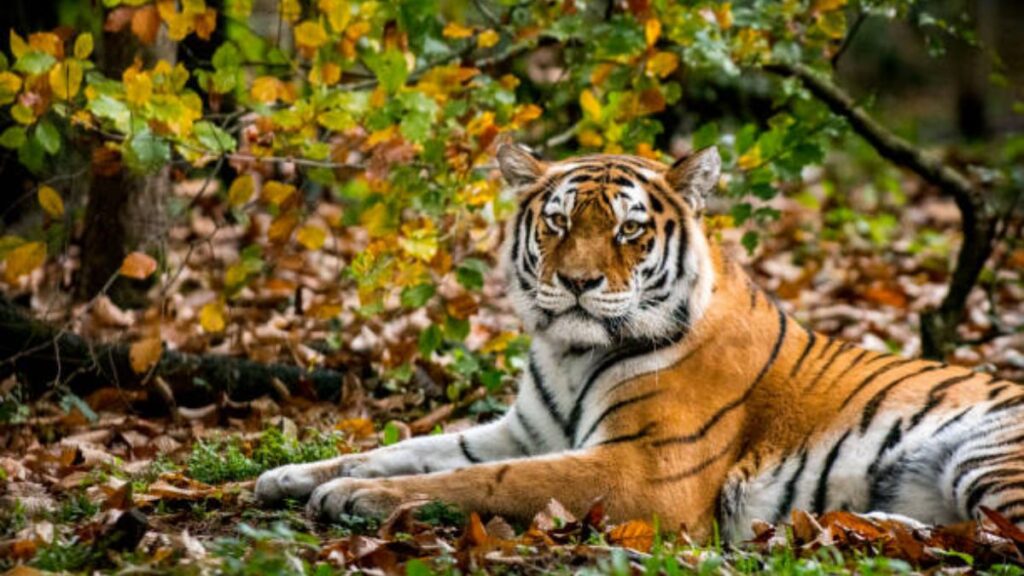Do you know which is India’s smallest tiger reserve and where is it located?

Representative Image
While India is home to many large tiger reserves and proudly boasts the highest tiger population in the world at 3167 tigers, did you know that there is a tiger reserve in Maharashtra that claims the title of India’s smallest tiger reserve?
Situated in the Wardha District of Maharashtra, the Bor Tiger Reserve spans a mere 138.12 square kilometers, making it the smallest tiger reserve in the country. The Bor Tiger Reserve is home to an astounding variety of plants and animals. It provides a singular and enthralling window into the world of Bengal tigers and other animals, and it was designated as a tiger reserve in July 2014.
Situated amidst numerous well-known habitats for Bengal Tigers, Bor Tiger Reserve has an exceptional location. The Pench Tiger Reserve, with its substantial tiger population and verdant surroundings, is located to the northeast of the area. The Nagzira-Navegaon Tiger Reserve, which has a dense forest cover and a variety of wildlife species, is another important tiger habitat that is located towards the east. To the southeast sits the Karhandla Wildlife Sanctuary, and a little farther on is the well-known Tadoba Andhari Tiger Reserve, one of the biggest and most established tiger reserves in India. Melghat Tiger Reserve is located to the west of Bor Tiger Reserve and is renowned for its mountainous topography and abundant wildlife. Lastly, the Satpura Tiger Reserve is located in the northwest and is a virgin area that provides an ideal setting for tigers and other wildlife.
The Bor Tiger Reserve is characterised by its dry deciduous forest type, a habitat that supports a wide range of plant and animal life. The reserve’s flora includes dominant tree species such as teak and tendu, which are crucial for the ecosystem. Bamboo groves are also common, providing essential cover and food for many species.
While the Bengal Tiger is undoubtedly the star attraction of Bor Tiger Reserve, the sanctuary is home to an impressive variety of other mammals. Leopards, sloth bears, sambar deer, wild boar, Indian bison (gaur), and chital (spotted deer) are some of the animals that call Bor home.
The reserve also supports a rich avian population, making it a haven for bird watchers. Various species of resident and migratory birds can be spotted, adding vibrant colors and melodious sounds to India’s smallest tiger reserve.
ALSO READ | Indian forests that House the Majestic White Tigers: Top 5 destinations for your next wildlife trip!
What is a tiger reserve?
Tiger reserves consist of a core area which includes part(s) of protected areas such as a national park or a wildlife sanctuary and a buffer zone which is a mix of forested and non-forested land. Project tiger is aimed at performing the necessary activities to ensure viability of tiger population in the core area and to promote a balance between the existence of people and animals in the buffer zones.
Tiger reserves were set up as a part of Project Tiger initiated in 1973 and are administered by the National Tiger Conservation Authority of Government of India.
In 1973, nine protected areas were initially designated as tiger reserves. By the late 1980s, the initial nine reserves covering an area of 9,115 km2 (3,519 sq mi) had been increased to 15 reserves covering an area of 24,700 km2 (9,500 sq mi). More than 1100 tigers were estimated to inhabit the reserves by 1984. By 1997, 23 tiger reserves encompassed an area of 33,000 km2 (13,000 sq mi). As of March 2024, there are 55 protected areas that have been designated as tiger reserves.









